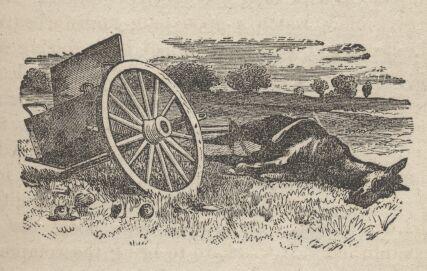Though Spring Valley Station was not listed on the 1861 mail contract as a station, and its exact location remains unknown, sources generally agree on its identity as a Pony Express station. This station did not exist when Richard Burton traveled through the area on October 5, 1860, however, the Pony Express did stop at a site somewhere in the valley. Constant Dubail or a man named Reynal possibly served as stationkeepers at Spring Valley. When Pony Express rider Elijah N. "Uncle Nick" Wilson stopped at the station for something to eat, he found two young boys managing operations. While Wilson was there, several Indians stole the station's horses. Wilson reportedly was killed when he tried to stop them.
The Overland Mail Company line maintained a station in Spring Valley until 1869, which also possibly served as a Pony Express stop after July 1861. The Overland station stood on property owned by Reed Robinson in 1976. Foundations exist near a turn-of-the century stone house on the property. Townley locates the Overland station site within the corrals, southwest of the stone house. Another theory suggests that the station stood on the present Henroid Ranch, an area that provided a shorter route to Antelope Springs Station through the Antelope Mountains.
Beyond Antelope Springs was Shell Creek, distant thirty miles by long road and eighteen by the short cut. We had some difficulty in persuading Kennedy to take the latter; property not only sharpens the intellect, it also generates prudence, and the ravine is a well known place for ambush. Fortunately two express riders came in and offered to precede us, which encouraged us. About 3 PM we left the springs and struck for the mouth of the kanyon, which has not been named; Sevier and Farish are the rival claimants. Entering the jagged fir and pine clad breach we found the necessity of dismounting. The bed was dry -- it floods in spring and autumn -- but very steep, and in a hole on the right stood water, which we did not touch for fear of poison. Reaching the summit in about an hour we saw below the shaggy of evergreens, or rather ever-blacks, which cast grotesque and exaggerated shadows in the last rays of day, the snowy-white mountains, gloriously sunlit, on the far side of Shell Creek. Here for the first time appeared the pinon pine (P Monophyllus), which forms the principal part of the Indian's diet; it was no beauty to look upon, a dwarfish tree, rendered shrub-like by being feathered down to the ground. The nut is ripe in early autumn, at which time the savages stow away their winter provision in dry ravines and pits. The fruit is about the size of a pistachio, with a decided flavor of turpentine, tolerably palatable, and at first laxative. The cones are thrown upon the fire, and when slightly burnt the nuts are easily extracted; these are eaten raw, or like the Hindoo's toasted grains. The harvest is said to fail every second year. Last season produced a fine crop, while in this autumn many of the trees were found, without apparent reason but frost, dead.
(The City of the Saints, p 465-6)
